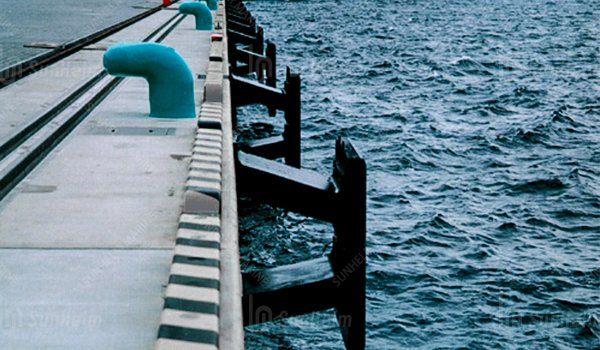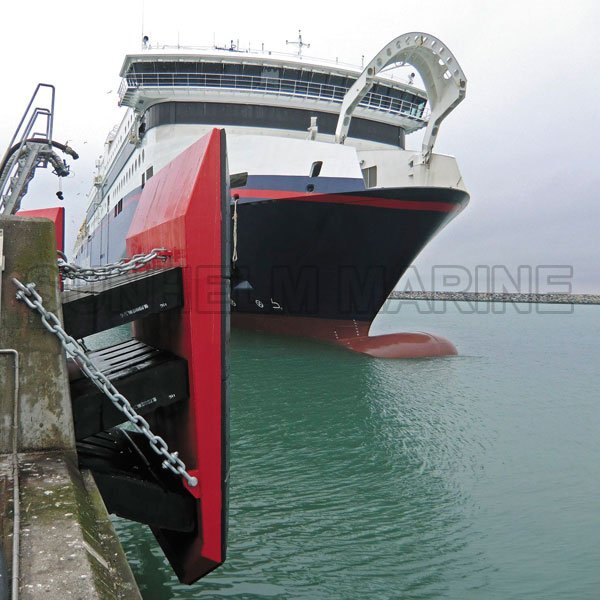Why Timing Matters: The Urgency Behind Upgrading Now
You might wonder, “Why should I care about fender upgrades today?” Picture this: your dock or vessel keeps showing wear after every berthing—deep gouges in the wall, frayed edges on existing rubber fenders, or visible cracks forming. Delaying an upgrade means facing higher repair bills, compromised safety, and potential downtime. In fast-paced marine operations, every day lost to damaged fendering is revenue slipping through the cracks. With rising maintenance costs and increasing vessel traffic, knowing when and why to switch to элемент резиновых крыльев isn’t just smart—it’s essential.

What Are Element Rubber Fenders (aka Marine Elements Fender)?
Element fendersиногда называют marine fender elements, are fully molded rubber legs with embedded mounting plates—essentially a modular evolution of V‑type fenders. Designed for installation behind steel panels or in confined spaces, they deliver high energy absorption with a compact footprint.


What Makes Element Fenders a Smart Upgrade?
- High energy-to-reaction ratio – they absorb more impact force while exerting lower rebound pressure.
- Modular & space-saving – can be installed in pairs, vertically or horizontally, ideal for docks and tight berths.
- Built to last – molded rubber resists ozone, aging, and abrasion—durability backed by top rubber specifications.
Signs You Need to Upgrade Your Ship Fenders
- Visible cracking, chunking, or permanent deformation of existing marine fenders.
- Frequent docking incidents: if fender panels “hook” or snag the hull, it’s time to reconsider.
- Limited dock space: Element fenders fit where larger cell or cone fenders can’t.
- Rising maintenance costs with your current system—element fenders lower long-term expenses.
Quick Fix Snippets
What are the element rubber fenders?
Element rubber fenders are modular, fully molded marine fender elements embedded with mounting plates, offering a space‑efficient, high‑energy absorption solution.
When should I upgrade to Element fenders?
Upgrade when you see damage from aging or hooking, have limited dock space, or want to reduce maintenance costs and boost safety.
Benefits of element rubber fenders?
High energy absorption, compact design, flexible mounting options, and outstanding durability reduce downtime and repair needs.
Why Sunhelm’s Element Rubber Fenders Stand Out
As a trusted name in marine protection, Sunhelm offers element rubber fenders that meet rigorous ISO and PIANC standards. Their designs ensure:
- Long-lasting natural rubber with excellent ozone resistance—outperforming cheaper, reclaimed options.
- Ideal for судовые крылья, port walls, and bulk terminals across global locations.
- Product lines include complementary морские крылья like cylindrical, cell, and foam-filled options for full-system integration.
Related FAQs
Q: What’s the lifespan of element rubber fenders?
A: Expect 10–20 years depending on berth type and traffic, with modular elements being easy to replace.
Q: How do element fenders differ from cell or cone fenders?
A: Element fenders are compact and versatile, whereas cell and cone types are larger and heavier—often needing more space.
Q: Can they handle rough seas or uneven berthing?
A: Yes. Their high elastomeric quality tolerates significant deflection, and proper installation avoids fatigue failures .
Q: Are element fenders customizable?
A: Absolutely—heights from ~250 mm to 1,600 mm and lengths up to 2 m.
Q: What maintenance is required?
A: Conduct regular inspections for wear or panel hooking, and replace elements individually as needed. Rubber quality reduces the need for frequent fixes .
Ready to Upgrade? Choose Sunhelm for Quality Assurance
Don’t wait until the damage becomes expensive. Sunhelm’s element rubber fenders are your go-to for safe, efficient, and durable dock protection. Contact them to design a bespoke system that fits your space and budget—your investment now can save you from costly repairs later.


